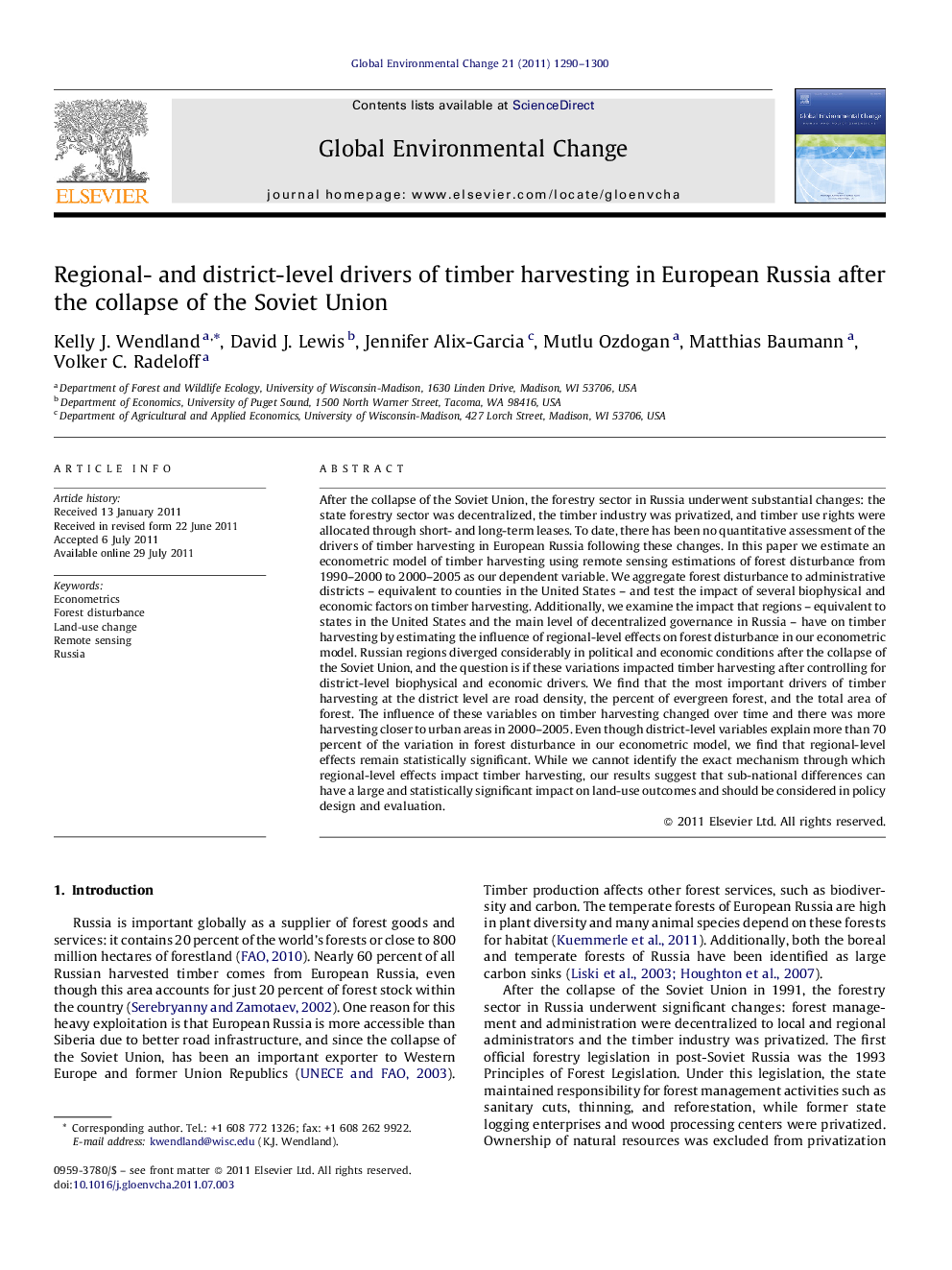| کد مقاله | کد نشریه | سال انتشار | مقاله انگلیسی | نسخه تمام متن |
|---|---|---|---|---|
| 1054694 | 946850 | 2011 | 11 صفحه PDF | دانلود رایگان |

After the collapse of the Soviet Union, the forestry sector in Russia underwent substantial changes: the state forestry sector was decentralized, the timber industry was privatized, and timber use rights were allocated through short- and long-term leases. To date, there has been no quantitative assessment of the drivers of timber harvesting in European Russia following these changes. In this paper we estimate an econometric model of timber harvesting using remote sensing estimations of forest disturbance from 1990–2000 to 2000–2005 as our dependent variable. We aggregate forest disturbance to administrative districts – equivalent to counties in the United States – and test the impact of several biophysical and economic factors on timber harvesting. Additionally, we examine the impact that regions – equivalent to states in the United States and the main level of decentralized governance in Russia – have on timber harvesting by estimating the influence of regional-level effects on forest disturbance in our econometric model. Russian regions diverged considerably in political and economic conditions after the collapse of the Soviet Union, and the question is if these variations impacted timber harvesting after controlling for district-level biophysical and economic drivers. We find that the most important drivers of timber harvesting at the district level are road density, the percent of evergreen forest, and the total area of forest. The influence of these variables on timber harvesting changed over time and there was more harvesting closer to urban areas in 2000–2005. Even though district-level variables explain more than 70 percent of the variation in forest disturbance in our econometric model, we find that regional-level effects remain statistically significant. While we cannot identify the exact mechanism through which regional-level effects impact timber harvesting, our results suggest that sub-national differences can have a large and statistically significant impact on land-use outcomes and should be considered in policy design and evaluation.
► We estimate the drivers of timber harvesting in European Russia from 1990 to 2005.
► We build an econometric model and use district- and regional-level variables.
► Harvesting has shifted closer to urban areas since 2000.
► Total forest area and net prices are strong determinants of timber harvesting.
► Regional political and economic differences also impacted harvesting.
Journal: Global Environmental Change - Volume 21, Issue 4, October 2011, Pages 1290–1300